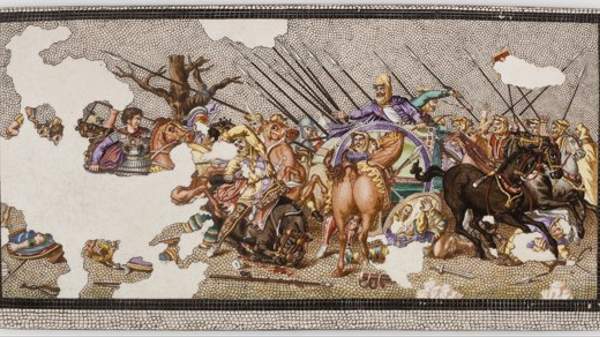Overview
Alexander the Great is not your friend. A winner, a military genius, maybe a bit of a multiculturalist. Generations have tried to cast him as a hero, but the gist of his life is much more Game of Thrones. His conquests were a travelogue of ancient, fourth-century life, crossing Greece, Egypt (where one of his generals later started Cleopatra’s dynasty), devouring the ageing Persian Empire and even touching on the edge of India (and, famously and allegedly, its elephants).
Alexander has been a symbol of strategy, lateral thinking and gay pride. Over the Sydney summer he's being cast as a bit of a blockbuster, as the Australian Museum and the Ark-worthy, Russian Hermitage Museum have put together a local incarnation of the exhibition Alexander the Great: 2000 Years of Treasures.
This show is divided into three big main sections. The first concentrates on Alexander himself and his upbringing. The second looks at the people and places that suffered his military attention across what the Greeks regarded as Asia. The third, and possibly most interesting, of the larger sections concentrates on what Alexander left behind on his death, age 33. (One of the most immediate things being a bunch of generals suddenly at a loose end, with a ready-assembled military machine.)
What this collection is definitely not about is everyday life as a Persian or Greek, or even as a Greek soldier. Most of these dazzling Alexander artefacts come from the Hermitage, a collection originally gathered together by another empire builder, Catherine the Great. And this is definitely a monarch's collection, seemingly drawn from the cabinet of curiosities of a powerful woman enamoured with the glories, and past, of a powerful man. This is not necessarily a bad thing.
These treasures are glorious. And a modern Australian's look at this period from a lifestyle that is probably much closer (warfare aside) to that of the fourth century BCE's ruling Greeks, than hoi polloi of ancient Hellenism. The gold in this exhibition speaks power. The power of the cultures who made them, the cultures that bought them with conquest and the power of the woman who owned such things, and so many of them.
Despite this, what strikes you most among the ancient statuary their fugitive heads, armour fragments, gorytos or motive vases is the humanity of the people depicted. Early on a happy Heracles (Hercules), casts his eyes about pleadingly for drinking company. Eros (Cupid) cocks his bow, dropping his visage into his work face. Demosthenes looks pissy. Meleager is zen. In a cabinet of uncannily preserved fourth-century BCE Scythian armour, a breastplate-drawn medusa sticks out her tongue. One of her eyes are missing, but her leer is full of play.
The aftereffects of his rule is probably the most interesting of all. It includes ancient artefacts from India, the emergence of hybrid religions and ruler cults, and the occasional Serapis or Priapus (ancient NSFW). There's also an excellent final annex on (very recent) modern representations of the conquering monarch.
This is a huge exhibition. It's easy to lose hours just looking at the ancient artefacts while missing some of the more recent or modern pieces hidden alongside. Details like a fragment of an ancient water clock, innumerable coins or immaculately preserved links of Scythain mail armour are apt to get lost along the way.
Not to mention the brief video essays along the show's walls assembled from interviews with local (world-class) university scholars. (Or the exhibition's linked program of events and conference.) These interviews provide any number of surprising tidbits, not least Prof. D.T. Potts' reminder that in many places, like Iran, Alexander is not seen as 'the Great'. Why? He reminds us: Alexander killed a lot of people.
Image shows a 19th-century reproduction of the Battle of Issus Mosaic © The State Hermitage, St Petersburg, 2012
Information
When
Saturday, November 24, 2012 - Sunday, April 28, 2013
Saturday, November 24, 2012 - Sunday, April 28, 2013
Where
Australian Museum1 William Street
Darlinghurst
